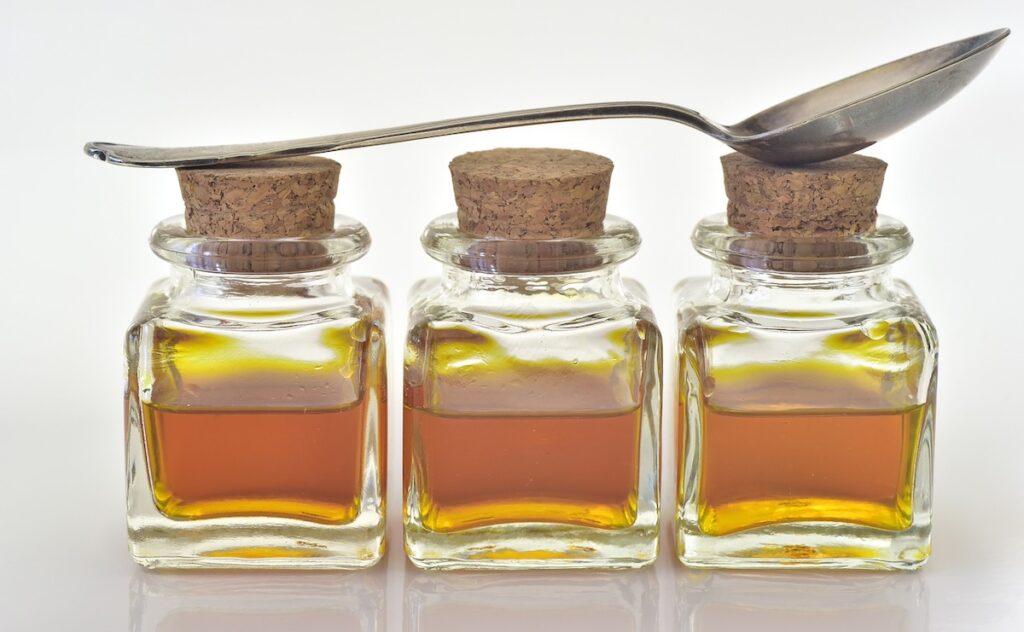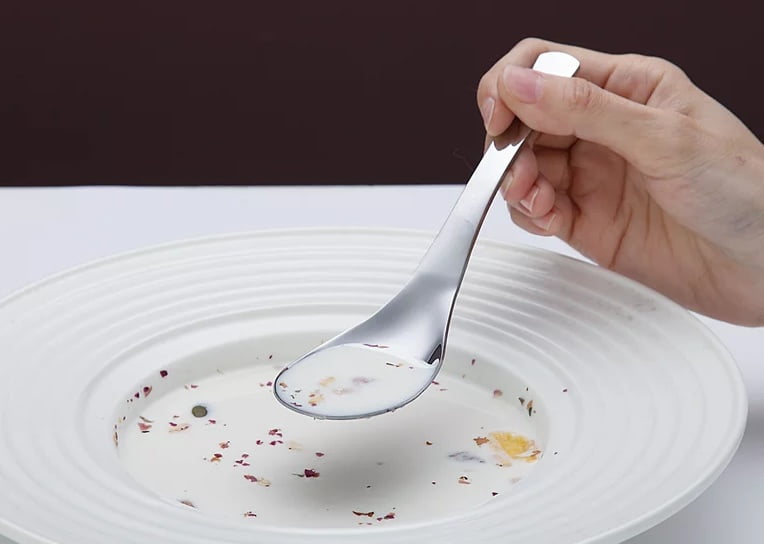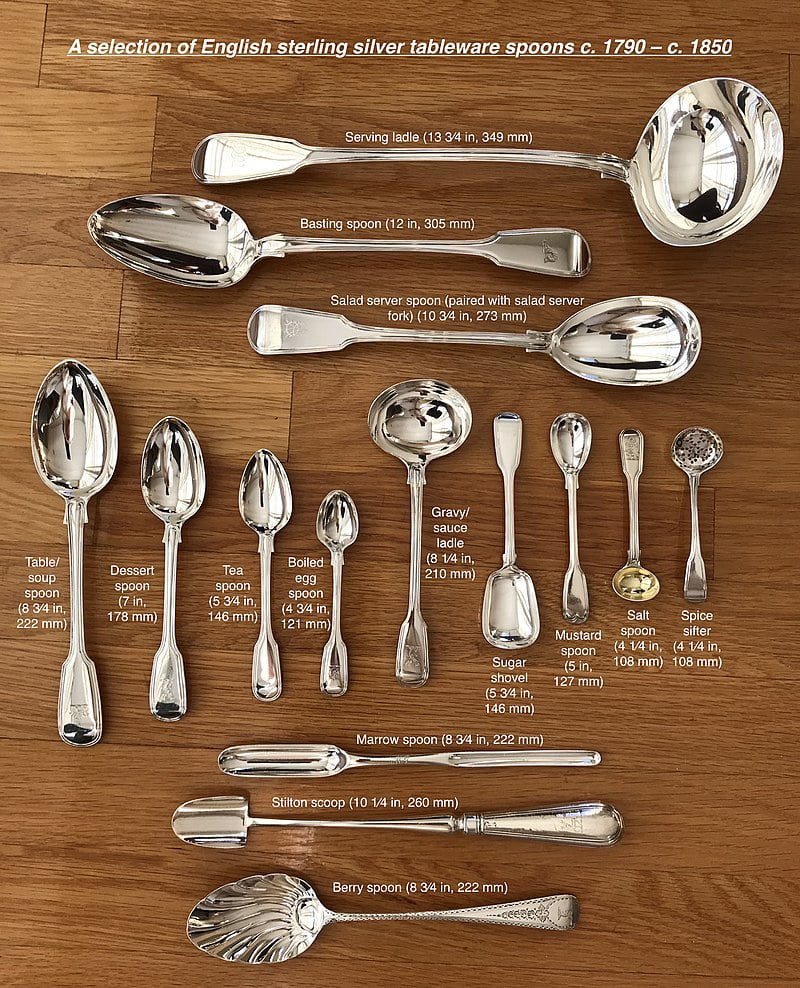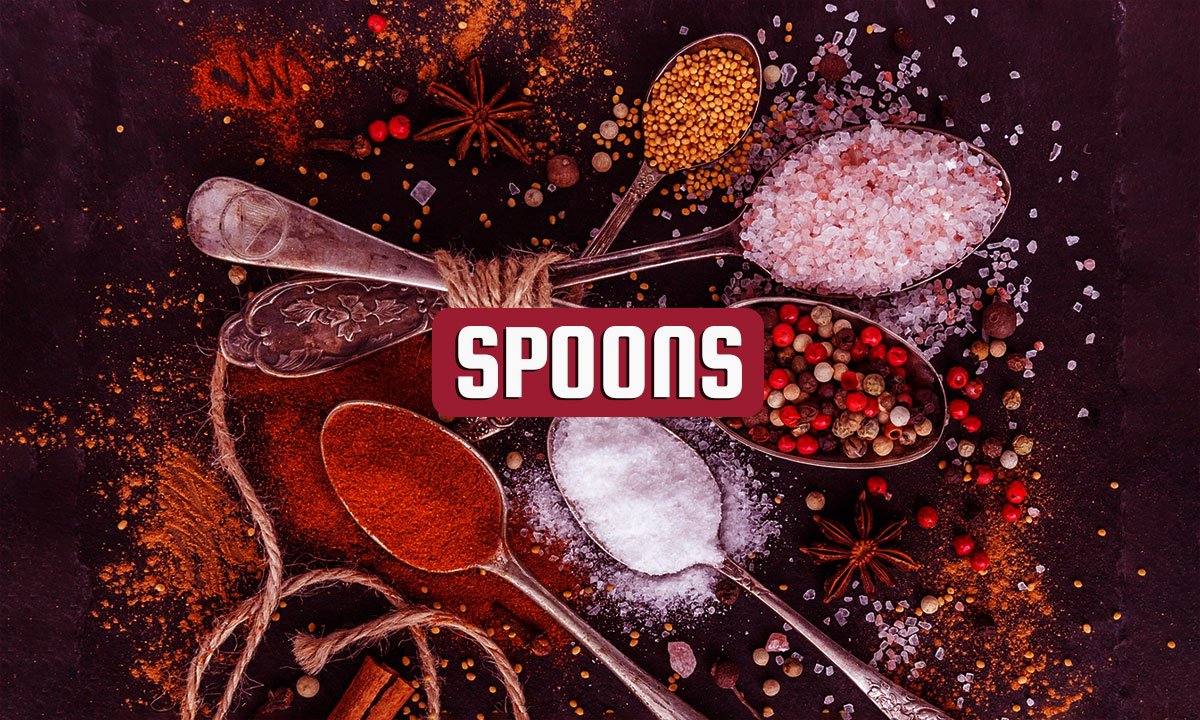Welcome to the fascinating world of spoons, an everyday utensil that plays an extraordinary role in our culinary journey. A spoon, with its shallow bowl and an extended handle, stands as an indispensable tool in kitchens and dining rooms worldwide. This unassuming cutlery, often part of a place setting, serves the fundamental purpose of transferring food from plate to mouth. But its significance doesn’t end there. Spoons have earned a distinguished place in food preparation, serving, and measuring.
Table of Contents
What Makes a Spoon?
A spoon’s basic structure comprises a bowl (also known as the head) and a handle. The handle, resembling a slender stick, may culminate in a sharp point or be adorned with a decorative knop, adding aesthetic value to this functional utensil. The term “spoon” has its origins in Old English, deriving from “spon” or “chip.”
Terminology of Spoons
The anatomy of a spoon, though seemingly simple, carries a few essential terminologies. The primary elements, the bowl and handle, create the foundational structure. Often, the handle is referred to as the stem, typically possessing distinct characteristics such as a sharp point or a decorative knob.
Stem Variations
The stem of a spoon, significant for its design variations, can add aesthetic flair. From the distinguished sharp point to the elegant knop, these variations have been part of spoons’ decorative elements across different historical periods.
The knop-top spoons, featuring a variety of shapes such as “acorn,” “writhen-end,” “maidenhead,” and “diamond point,” gained popularity in England during the 14th to 17th centuries. These colorful variations added charm and character to the spoons of that era.
Who invented the spoon ?
The history of spoons dates back to ancient civilizations, leaving intriguing traces of their use and significance in various cultures. Archaeologists have uncovered preserved examples of spoons used by ancient Egyptians, crafted from materials such as ivory, flint, slate, and wood. These spoons often carried religious symbols, indicating their ceremonial or ritualistic importance.
During the Neolithic Ozieri civilization in Sardinia, ceramic ladles and spoons were already in use, hinting at the early recognition of the spoon’s utility. In Shang Dynasty China, spoons made of bone were prevalent, signifying the diversity of materials used for their construction.

Spoons in Medieval Times
During medieval times, spoons underwent a transition, diversifying in materials and designs. They were commonly crafted from cow horn or wood, offering practicality and ease of use. However, as the 15th century approached, spoons made from brass, pewter, and latten became more prevalent, marking the evolution of materials used in their construction.
Significance and Rarity
In royal and noble households, spoons held special value and were sometimes made from precious metals like gold and silver. The wardrobe accounts of Edward I from 1300 mention gold and silver spoons marked with the fleur-de-lis, indicating their opulence and exclusivity.
Ceremonial and Decorative Spoons
The Coronation Spoon, a treasured item in the British royal regalia, is a 12th-century relic used in the anointing of English sovereigns. The ritual significance of spoons extended beyond everyday use to ceremonies, such as christenings, where Apostle Spoons, adorned with the busts of apostles, were popular gifts.
Evolution of Spoon Design
Over centuries, spoon design underwent remarkable transformations, reflecting the trends and influences of various historical periods.
Design Variations Through History
In earlier times, spoon handles ended in acorns, plain knobs, or diamonds. By the late 16th century, the baluster and seal ending became prevalent, followed by the broad, flat handle during the Restoration period. The shape evolved further in the 18th century, with the bowl becoming narrow and elliptical, featuring a rat’s tail down the back.
By the late 18th century, the modern spoon form emerged, characterized by a narrower tip and a rounded handle end. This design eventually became the standard for spoons across the world.

Spoons in Modern Times
Functional Uses in the Kitchen
Spoons serve various purposes in food preparation, from stirring and mixing ingredients to tossing and drizzling sauces. They are instrumental in processing jelly, sugar, and syrup, with specific stages of boiling being indicated by the behavior of these substances when dropped from a spoon.
Diverse Types for Different Tasks
Beyond the standard dining spoon, the culinary world boasts an array of specialized spoon designs. From caviar spoons crafted from mother of pearl to iced tea spoons with elongated handles, these variations cater to specific tasks, reflecting the diversity of modern dining needs.
Spoons in Various Activities
1. As Cooking and Serving Utensils: From ice cream scoop spoons to slotted spoons, these specialized utensils cater to cooking, serving, and preparation needs.
2. In Rituals and Ceremonies: Notably, the Coronation Anointing Spoon holds ceremonial significance in the crowning of English sovereigns.
3. As Decorative and Symbolic Items: Spoons, like the Cochlear of the Eastern Orthodox Church or newborn spoons made from silver, hold symbolic significance beyond their functional use.

Types of Spoons and Uses
| Spoon Type | Information |
|---|---|
| Bouillon spoon | Smaller than a soup spoon with a round bowl, used for consuming broth or light soups. |
| Caviar spoon | Usually made from materials like mother of pearl or wood, specifically for caviar to avoid affecting its taste. |
| Chinese spoon | Characterized by a short, thick handle extending directly from a flat bowl, commonly used for soup in Chinese cuisine. |
| Coffee spoon | Smaller than a teaspoon, used for stirring and sipping coffee in after-dinner coffee cups. |
| Demitasse spoon | Even smaller than a coffee spoon, ideal for traditional coffee drinks or spooning cappuccino froth. |
| Dessert spoon | Intermediate in size between a teaspoon and a tablespoon, used for eating desserts, soups, or cereals. |
| Egg spoon | Specifically designed for eating soft-boiled eggs, featuring a shorter handle and a round bowl for scraping egg out of the shell. |
| French sauce spoon | Similar to a dessert spoon but with a flatter, notched bowl, used for consuming sauces. |
| Grapefruit/orange spoon | Tapered to a sharp point or teeth, used for eating citrus fruits and melons. |
| Gumbo/Chowder spoon | Larger round bowl, approximately 7″, primarily used for consuming gumbo or chowder. |
| Iced tea/parfait spoon | Features a teaspoon-sized bowl with a long slim handle, used for stirring tall drinks or eating parfait, sundaes, or sorbets. |
| Korean spoon | Long-handled spoon, often with a shallow point at the end of the bowl, used in Korean cuisine. |
| Marrow spoon | Often made of silver, with a long thin bowl suitable for extracting marrow from a bone. |
| Melon spoon | Typically made of silver, designed for eating melons. |
| Plastic spoon | Long-handled spoon, often with a shallow point at the end of the bowl, is used in Korean cuisine. |
| Rattail spoon | Developed in the later 17th century, featuring a thin pointed tongue on the bottom of the bowl. |
| Salt spoon | Miniature spoon used for individual service with an open salt cellar. |
| Saucier spoon | Slightly flattened spoon with a notch, used for drizzling sauces over delicate foods. |
| Soup spoon | Features a large or rounded bowl, primarily used for consuming soup. |
| Cream-soup spoon | Round-bowled and slightly shorter than a standard soup spoon, specifically for cream-based soups. |
Conclusion
Throughout the ages, spoons have been far more than mere eating utensils; they represent an intricate tapestry woven into the fabric of human history. From their humble beginnings carved out of wood, slate, or ivory to the ornate designs crafted from bronze and silver, spoons have evolved into indispensable tools in the culinary world and beyond.
The journey of the spoon reflects human ingenuity and innovation. Across cultures and civilizations, these small, yet versatile tools have transcended their primary function as conveyors of food. They’ve been used ceremonially, as symbols of status, and in everyday culinary activities. They’ve embraced various forms and designs, adapting to specific cultural needs and preferences.
Exploring the history of spoons reveals the fascinating story of human civilization’s culinary evolution. From the early civilizations of Egypt and Sardinia to the opulence of the Medieval and Renaissance periods, spoons have witnessed and reflected the changes in human society, culture, and craftsmanship.
The numerous types and uses of spoons across different eras and cultures showcase the diversity of human creativity. From the elegance of the Coronation Anointing Spoon to the practicality of the ice cream scoop, each spoon design and purpose offers a unique insight into its cultural context and intended function.
In conclusion, the evolution and significance of spoons represent more than just culinary tools. They embody our history, culture, and creativity. The enduring presence of spoons in our daily lives, despite technological advancements, underscores their timeless importance. These small yet essential tools continue to serve as a bridge between our past and present, linking generations through shared traditions and culinary practices.
The diverse array of spoon designs and uses across the world underscores the remarkable versatility and adaptability of this humble yet indispensable utensil.

